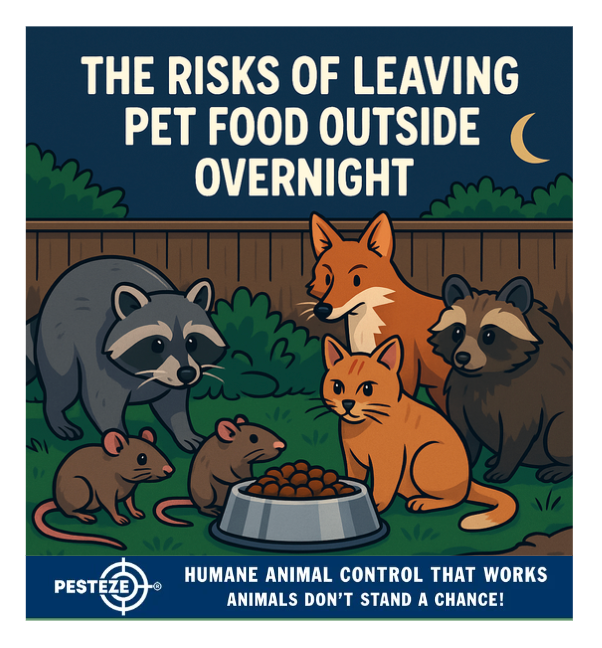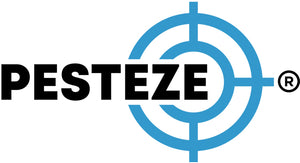THE RISKS OF LEAVING PET FOOD OUTSIDE OVERNIGHT

THE RISKS OF LEAVING PET FOOD OUTSIDE OVERNIGHT
SUMMARY
This guide explains why leaving pet food outside overnight can attract unwanted wildlife, spread disease, and create safety hazards for pets. It offers practical tips for managing outdoor feeding while keeping your home and pets safe.
FEATURES
-
Wildlife Attraction: Leftover food invites raccoons, rats, and stray animals.
-
Health Risks: Contaminated food spreads bacteria and parasites.
-
Pet Safety: Wild animals may harm or infect pets that share the area.
-
Insect Problems: Open food attracts ants, flies, and cockroaches.
-
Odor and Cleanup Issues: Spoiled food causes bad smells and messes.
-
Smart Feeding Habits: Feed pets at set times and bring food indoors.
GUIDE DESCRIPTION
Leaving pet food outside overnight may seem harmless, especially for outdoor pets, but it can create serious problems for both your home and local wildlife. Unattended food quickly becomes a magnet for pests, disease, and dangerous encounters between animals.
The most immediate concern is wildlife attraction. Food left outdoors overnight draws raccoons, rats, opossums, skunks, stray cats, and even larger predators such as coyotes or foxes. These animals can become dependent on easy meals, leading to more frequent visits and potential conflicts with humans or pets. Once wildlife associates your property with food, they may return regularly and even nest nearby.
Contamination is another major issue. When different animals feed from the same bowl, they can transmit parasites, bacteria, and viruses. Diseases such as leptospirosis, toxoplasmosis, and salmonella can spread through saliva or droppings left near the feeding area. Spoiled food, especially in warm or humid weather, becomes a breeding ground for harmful microorganisms that can make your pets sick.
In addition to animals, insects are also drawn to open food. Ants, flies, and cockroaches thrive on leftover kibble and wet food residue. These pests can invade your home through nearby cracks or windows, turning a simple feeding mistake into a household infestation. The odors from decomposing food can linger, further attracting unwanted pests and making cleanup more difficult.
Leaving food outside can also endanger your pets directly. Wildlife drawn to the food may become aggressive when defending it, putting pets at risk of bites, scratches, or disease exposure. Even neighborhood strays can create territorial disputes or spread fleas and ticks. It’s safer to feed outdoor pets during the day and remove any leftovers promptly.
The best prevention strategy is adopting consistent feeding routines. Offer food during daylight hours, and bring bowls indoors after your pet has finished eating. Store pet food in sealed containers to prevent odors from attracting wildlife. If you must feed feral or outdoor animals, do so in designated areas away from your home and clean up afterward.
By managing feeding habits responsibly, you can protect your pets, prevent pest infestations, and maintain a healthier, safer environment for your entire household.
- Saneeth Thota


Comments 0